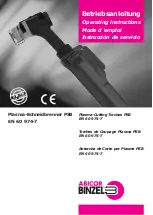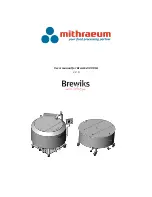
MIG-200MI / MIG-250MI
©
Röhr
8
©
Röhr
Fittings, welding materials and environmental factors may affect the quality of your welding.
This guide will help you to ensure your setup is just right to achieve the perfect weld.
Oxidisation occurring during weld
• Check that your Argon cylinder is open and pressurised to a minimum of 0.5Mpa.
• Check that the flow meter is open and it has enough flow. You can select the flow
according to the welding current. Insufficient flow may cause oxidisation.
• Check the torch to ensure that it’s not blocked.
• Check that the gas supply is fully air tight.
Hard to strike / maintain an arc
• Ensure you are using a high quality tungsten electrode.
• Grind the end of the tungsten electrode to a taper. If the tungsten electrode is not ground, it
will be difficult to strike arc or the arc may be unstable.
There is no power to the unit / no response from the unit
• Ensure that the electric cable is in good condition and connected correctly. Faulty cables
must not be used, they should be replaced by a qualified professional.
The HF arc-striking sound can be heard but there is no welding output
• Check the torch and ground cables to ensure that they are connected correctly and they
are not damaged. Faulty cables must not be used, they should be replaced by a qualified
professional.
• Check that the grounding cable is making good contact with the welding object.
• Check the end of the tungsten electrode to see if it needs to be ground down to a taper.
Electrodes that have become contaminated need to be ground down.
Unit producing untidy welds
• Ensure that the feed speed is not too fast and that the protruding wire is not too long.
• Ensure that the amp output is not too high.
Wire feed not stable
• Adjust the wire feed or loosen the nut on the wire plate.
Troubleshooting


































